Marvel Snap is just shy of three months old, and it’s fair to say it’s been a success. While the exact number of users hasn’t been shared, Google Play reports over five million downloads, even before you include iOS numbers. And with such popularity comes great scrutiny. Why are the store prices so astonishingly high? Why does it demote everyone 30 levels every four weeks? Why won’t they just get rid of Leech because it ruins my deck? So rather than wondering, we put these exact questions to Marvel Snap’s project lead and Hearthstone’s former lead designer, Ben Brode.
Brode has been the public presence of some of the most successful digital card games for almost a decade. At Blizzard, he was the face of Hearthstone, the enormously popular Warcraft-themed CCG, that at one point was earning between $25 million and $40 million a month. In 2018, he left Blizzard to form a new studio, Second Dinner. Since then, with a hefty investment from NetEase and a license from Disney, the team has been developing Marvel Snap, released last October to enormous acclaim.
Marvel Snap is a game Kotaku has been playing an inordinate amount. Personally, I don’t think I’ve missed a single day since its release, meaning I’ve given a lot of thought as to why it’s so compelling, and so very sticky.The more I play, the less I think it’s about anything to do with Marvel superheroes.
I begin our hour-long Zoom chat by asking if Brode thought the game could have worked as well without the Marvel license. “No, I don’t think so,” he muses. “I think, especially for a collectible game, you have an emotional connection, that you are that Marvel character. Like, it’s just such a different experience when you’re collecting stuff. You’re like, ‘Oh, I got like, Daggers Hands and Telepath Man,’ you’re just like, ‘Yeah…’ But at the same time, open Wolverine, you know?”
Thinking on this, I realize I quickly lost all my sentimentality when playing. I love Spider-Man, I told Brode, but I don’t play him in any of my decks. “Sure,” says Brode, “but something has to get you in the door. And it’s a really unappetizing door if behind it you’ve got Stabby Hands and Laser-Beam-Face Guy.”
Talking of Laser-Beam-Face Guy, I’m reminded to ask why a character as recognizable as Cyclops got such a crappy card. It provided an excellent example of how Brode seems to achieve something few high-profile developers can maintain: a deep passion for the craft behind the game, but also an enormous enthusiasm for playing it.
In response to my essentially teasing him for throwing away a Marvel icon as a starter card, Brode explains in great detail how important it was to create starter decks with recognizable characters, talking about onboarding experiences, simple cards that teach players how to play the game, and even detailed how the addition of Silver Surfer and Patriot has given Cyclops a new home in later decks. How they’re now seeing a resurgence for the card. Then we get to the other side of him, the player, the Marvel fan. “But also,” Brode adds, “Cyclops is one of the most boring, annoying X-Men.” Preach it.

More Money, More Problems
Brode’s enthusiasm for Marvel Snap is astounding. Sat indoors in a thick waterproof coat, he is already bursting with energy at 10am Pacific time, psyched to be talking about his game. It makes me feel bad to bring the mood down by suggesting that perhaps his free-to-play game’s prices were a smidge on the enormous side. Before talking about the $100 dollar elephants, I ask whether the $10 four-week season passes might be due a revision, and whether it’s possible player enthusiasm was waning by the fourth ask.
While not willing to divulge such numbers, Brode insists that he believes their pricing offers good value. “If we feel like we’re not offering good value, and the players feel like they’re not getting something that is worth that, then I think we should consider [looking at] that stuff.” I drill down on this notion of value, something I feel Marvel Snap is especially poor at communicating. The game hands out Credits like candy, but then prices them incredibly high to buy, only further confusing the matter by its inconsistent value of the Gold currency. Yet, at the same time, the entire game can be played for free, and progression is not markedly slowed if someone chooses not to spend a penny. They’re such odd extremes. Something that gets even more bizarre with this week’s release of the “Pro Bundle,” where players can spend a whopping $100 to get a wad of Credits and Boosters, letting them advance their deck without playing at all. I suggest these are huge prices for cosmetics and incremental increases, given a brand new first-party AAA console game is $70, all told.
“Yeah, I mean, we’ve always said that we want the journey to matter a lot,” says Brode, appearing less comfortable on this topic, and taking some (good-natured) umbridge at my suggestion that often the game is charging large sums for what boils down to a collection of JPEGs. Protesting that variant cards require 3D modeling, animation, and so on, he concedes that it often comes down to cosmetics.
“I think it’s the kind of thing where we expect some players to be interested in that,” suggests Brode, “and if you wanna collect some stuff, it’s a totally reasonable option for you.” But that Pro Bundle? “It’s meant to be a thing for players who are ready for a turbo-charge. It’s a piece of feedback we get all the time from players, ‘I’m a more advanced player, I want to get to the juicy stuff.’ There’s a limit on how much you can spend every day, right? You can’t buy infinite credits. So for those players who are craving a deeper experience much faster, things speed up a little bit.”
I once more lament that one hundred dollars is so much money. “It’s all about whether you think the value’s there,” counters Brode. “People were already paying for it, and we wanted to make this easier for them. It’s not for everybody, it’s an optional thing, right?” He agrees that it might not be an “attractive” bundle for others, and added that they intend to continue to experiment with different options for different players.
Divining Inspiration
Of course, the Wild West of free-to-play mobile games means price tags routinely reach bizarre extremes. Yet, when it comes to Snap, Brode says his team have struggled to find something else to compare it to. “There’s not really any other game that operates like us, that we could use as inspiration for monetization,” he says. “Most other card games have booster packs, where you can spend hundreds and thousands of dollars on every set that comes out every three months. Or you can spend thousands of dollars leveling up your cards, and that also doesn’t work because the math gets all funky and doesn’t feel right for our type of game.”
In the end, the main inspiration came from a surprising source: Pokémon Go. Brode points out that in Niantic’s mobile game, the one thing you cannot buy is Pokémon. You can speed up the processes, buy the incubators and incense and lures, but you still have to catch the Pokémon themselves. Similarly, Snap offers no way for players to buy a specific card, but rather offers ways to speed up the process of unlocking the next random offering.
Yes, the random unlocks. It’s something that’s proven, overall, popular with players. Instead of there being an ascending order of cards, unlocked by reaching certain levels, the game gives them to you in a random order, from three “pools.” This means you might get the excellent Killmonger very early on in your decks, while someone else might find it eludes them until much later, driving them to find a different way to deal with 1-energy cards. I wonder how they decided to approach cards this way.
“There was a feeling of grindiness,” says Brode, explaining that during development, cards were unlocked in a specific order. “The road was laid out, the cards all visible. And you’d look at that road and you were like, ‘Oh my God, it’s gonna be months until I get to Deadpool. This sucks.’ You had no hope. It just didn’t feel fun, and it felt grindy.” Randomness, they discovered, turned the game from a hopeless chore to something much more exciting, where there was always the hope that the next card might be the one you want.
Tales Of Victory
This naturally leads us to start chatting about the cards themselves, as I share how my desire to finally get my hands on Wong had been a real motivating factor for me to keep playing. How seeing it played in other people’s decks made me envious, and finally unlocking it was, for me, a huge victory.
We go on to talk about the most overrated and underrated cards in the game, as Kotaku has reported in detail. All well and good, but what I really want to know is which card Brode actively hates. Not based on data, but on that sinking feeling when he sees it played. Surely Leech, right? It’s got to be Leech? “I do hate Professor X,” he says. Yeah, that’s fair.

We begin swapping tales of victory, both of us pulling up screenshots we’ve taken for later boasting. I’m delighted to get a big laugh when I told how I’d just recently played Wong onto Onslaught Citadel, a location that doubles On Reveal actions, hosting a card that does the same. Then on went Ironheart and her power-increasing boosts, followed by a perfect finish with Odin, retriggering every card on the location twice over, twice over, twice over. 464 points I finished on. It was painful and hilarious to watch play out. It’s also great that Brode is still able to be delighted by the little tales the game generates.
“There’s a new feature in the patch,” Brode interjects, “where if you have some combo that executes for minutes, it fast-forwards to the end.” I was deflated. That ruins my favorite play of dropping Odin on Bar Sinister when I’m losing, just so my opponent has to watch two minutes of animations play out for literally no reason. It’s all gone.
Brode joinsin, gleefully celebrating how mad players can get. Subterranea, he says—the location that adds five rocks into both decks—gets more hate than any other, but he says offers the best opportunities to bluff. “When I have a handful of rocks, and I snap, and my opponent retreats, just amazing, right? I literally had rocks on rocks. And you bought it, you bought it sucker!”
Pulling Rank
I try to goad Brode into revealing unreleased cards they’re struggling to balance right now, but he can’t be budged, so instead I compromise on asking which he thinks is the riskiest they have released. “Galactus,” he says, without hesitation. The card is definitely controversial: when played, the 6-power card—if it’s the only one at a location—will completely obliterate the other two locations for both players. It’s the victim of a nerf in this week’s patch, now only offering 2 power instead of 3, and Brode suggests it could be in line for further tweaks, because it’s such a literal game-changer. “I think in our minds Galactus is this unbelievable moment. Huge, crazy thing, right? It’s important to do crazy stuff, and break the rules. But I think there’s also an inherent risk in doing it.
The balancing act with Galactus, he explains, is to somehow make this ridiculously powerful card something players won’t often want to use. I love how he explains this: “If the best part of the game is Galactus, then it’s not the best part of the game.”
Talking of controversial decisions, I raise the way Snap drops players a whopping 30 levels in the rankings every four weeks. Saying how infuriating I find it, I add that I assume there must be a solid game design reason for doing it. “You know,” says Brode, more contrite than I was expecting, “I’ve never worked on a game that did not completely redo the rank system multiple times during live development. I imagine we will continue to tweak our rank system.” While there are no immediate changes planned, he concedes that it’s “not a perfect system,” but it’s there in the face of two competing goals.
“One is to, you know, properly rank you. To let the player know how good they are at the game. The other goal is progression. People like making progress, feeling like they’re improving over time. A lot of rank systems are designed around achieving both of those goals at the same time.” If the game doesn’t demote players every season, then the progression aspect is removed. “You’re matching against players the same rank as you, and you belong there. You get stuck. And I think that experience isn’t great.” However, he continues, “We have this other experience where we demote you, and let you make the progress over the course of the season, and it’s also not great! It’s not like we get to choose good or bad. We have to choose some good, some bad.” But, he concludes, on balance the feeling of progression feels good to most players.
However, I argue, dropping 30 levels also puts you back in bot territory, and so yeah, we’re inevitably discussing the game’s bots. Another point of contention, Brode is very certain that he considers the game’s bots to be an overall good thing. He’s also pretty certain that a lot of the time when people think they’re playing a bot, it’s likely they’re just playing someone bad at the game. But, even if there are tells, things that give away that it’s not a real human opponent, he says, bots are a net positive. Why? Well, it turns out they’re pretty essential for progression.
“If you only match [players] against the same rank, you end up with an audience almost entirely at the bottom. Everyone’s ranked 10 or whatever, because they’re pushing each other in the two poles. In order to make forward progress, you push other players back.” Brode draws an exponential curve in the air, explaining that there are almost no players at the top end, everyone fighting it out on the long shallow slope at the bottom. “This happened on Hearthstone,” he adds, “where we had to tell you, ‘Look, you’re rank 15. That’s the top 10 percent of all players.” But players weren’t convinced, when they could see a further 15 ranks above them. Bots, he says, break this zero sum. No one’s exclusively playing bots, but their presence means you can make progress without pushing everyone else back to zero.
Of course, players have come up with systems to spot bots, many bombarding the screen with emotes to see if they can get their opponent to reply, every game feeling like it’s starting with a Turing test. I wonder if Second Dinner has been tempted to program the bots to reply with emotes to mess with this? “Absolutely!” says Brode. “It’s something we’d love to do! At the end of the day, if you’re having a good time playing the game, that’s what really matters.”

Priority Queue
People were surprised when a few features weren’t in the launched version of Marvel Snap: a way to play against friends, and a way to play “friendly” games, with no risking a loss of cubes. I wanted to know why neither of these had been seen as priorities to be in place before the official release. “I wouldn’t say [they’ve] not been a priority,” says Brode, “but in game dev you have to push your dates, or crunch, or do effective scope control. Those are the three levers you have. And the crunch lever is a fake lever—it doesn’t actually do anything. You burn everybody out, and it doesn’t actually give you more stuff over the long term. So the other two are your dates, or your scope control. This was extreme scope control. Do we need this absolutely? I think the answer is, clearly, no. The game has been successful and exciting, and made a huge splash without it. But on the bright side, it’s coming.”
Priorities were, Brode explains, making sure customer services were in place for support, completing localization—the more fundamental requirements. Then, immediately after launch, it turned out crediting artists became the loudest priority the community was calling for. The game already did, of course, but it was within the main credits for the game. People wanted to know who did a particular piece of art while looking at it, and made clear it was important. “This is like one of the top things we’re hearing,” recalls Brode, “let’s prioritize that.” And this week, that feature was added in.
Cards On The Table
Assuming the person who was pivotal behind the creation of Hearthstone and Marvel Snap would be in the know, I ask if Brode had any recommendations for other card games we should all be playing. It turns out, during the five-year development of Snap, he played absolutely everything. “One of the things that is really important for a game designer to do, before they design anything, is to play everything out there. I’ve probably played more digital card games than anyone! And every one of them taught me something, even if they’re not good. I can learn, oh, that mechanic has problems, I don’t have to build the mechanic and test it for my game, I can just build a model of best practices, to find the right direction, to find the path.”
One game that was especially inspirational, says Brode, is something that’s now offline, and he’s sure no one will have heard of: Card Monsters: 3 Minute Duels. “It was a digital vertical mobile collectible card game, with very short games, and we knew we were going to make a game in this space. I [realized], oh yeah, you can do it! I was really into that game.”
More awkwardly, as the developer diligently explored every other game, Brode reports a troubling moment when a game was released that was “uncannily similar” to the game he was making. A table-top card game called Air, Land & Sea. “There’s three locations, and you’re trying to get the highest power to those locations, and they even have a mechanic that’s very similar to the snap mechanic, where if you bail out early, you lose less points.” He reels at the memory of the moment, but then reveals that its lack of simultaneous turns, and how differently it actually plays out, meant concerns were alleviated. Brode adds, “It’s not a collectible card game, but, you know, it’s a bunch of fun.”
We wrap up sharing tales of playing Pokémon TCG with our kids, about the lessons learned by building a bad deck and improving it, rather than getting over-confident with a half-decent deck. Then Brode shares the sweetest story. “When my son and I play the Pokémon card game, he has a deck of blank cards, and he creates cards on the fly during the battle.” I’m so delighted by this idea, but Brode points out, “It’s very frustrating for me, because he always beats me, because he just makes better cards.” Yet, it seems the boy is something of a chip off his father’s block. “At the same time,” Brode notes, “I want to foster his card design skills!”


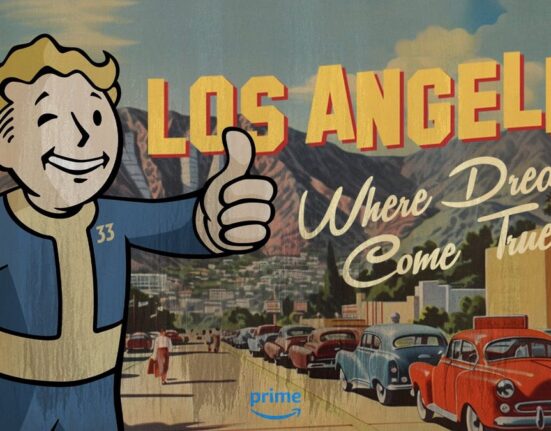
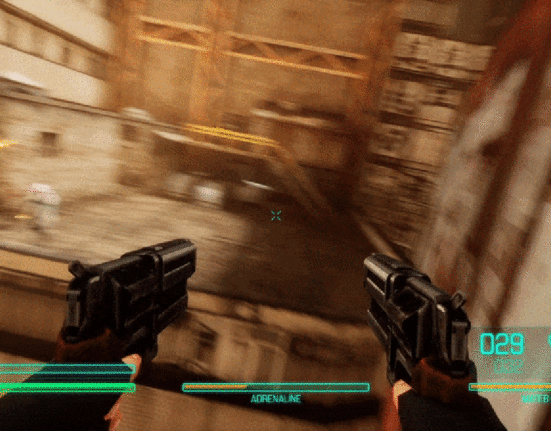
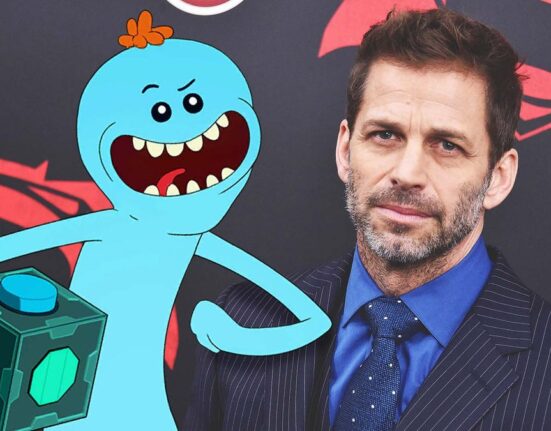
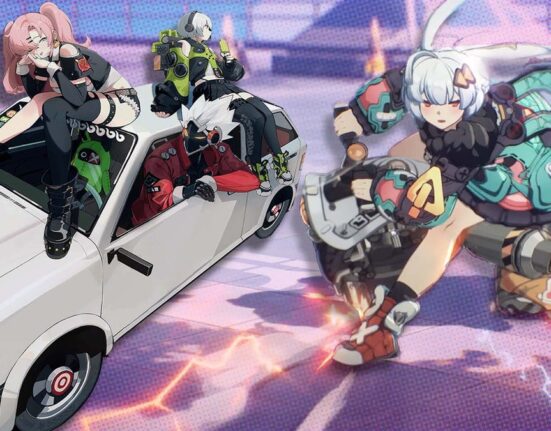
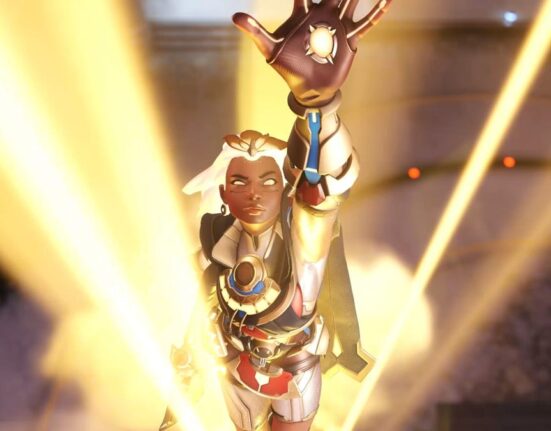
Leave feedback about this